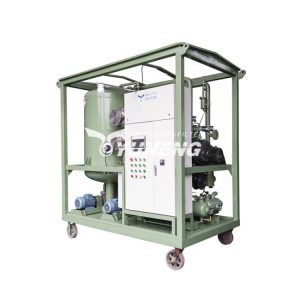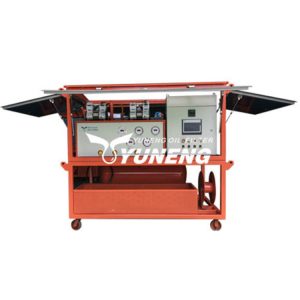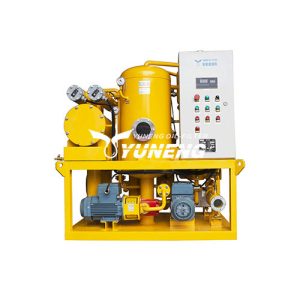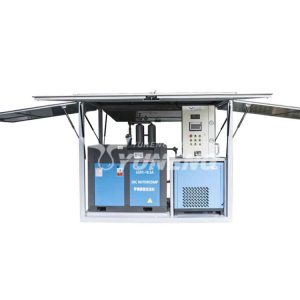
Everything You Should Know about Transformer Oil Filtration Systems
- 2021-10-22
Our cities run on a huge power grid, and one of the important components in the power grid is the transformer. We see transformers almost everywhere in our daily life. they increase/decrease voltage levels between circuits and make them function normally. While as an electric transformer device might seem to be just a metal box, its internal structure is extremely complicated. A transformer even needs a kind of oil known as transformer oil to work effectively.
Every expert in the industry understands the importance of transformer oil, and how hard it is to maintain it. This kind of oil gets continuously contaminated and harms the transformer, thus a purification process is always needed on a routine. And in this article, I’ll list everything you need to know about transformer oil filtration systems. Stay tuned if you’re interested.
What Is the Transformer Oil?
Like other industrial oils, transformer oil (or insulating oil) is one of the Petroleum products. It is added into a transformer to be used as an insulator and coolant. To perform such functions, transformer oil is required to have heat resistance, thermal conductivity and electrical insulating properties. Mineral oil and Synthetic oil were then selected and became the most common insulating additive added in transformers.
The windings of a transformer are immersed in the oil to dissipate heat. That’s a vital process for large transformers. Small transformers (such as those in household appliances) won’t generate so much heat, thus don’t need any oil. But transformers in industrial and large power grid consume a large amount of transformer oil every year ‘cause it gets contaminated gradually.
How Is Transformer Oil Contaminated?
There are 4 main contaminants – moisture, acidity, sludge and solved gases(nitrogen, oxygen, oxides of carbon and hydrocarbons). Either externally or internally generated, those pollutants would cause damage to transformers and have their productivity reduced. Like I said, internally and externally. That’s exactly how transformer oil gets contaminated. So below I’ve created a table detailing the specific causes of various pollutants, and the category is mainly divided into internal and external.
| Internal Source | Eternal Source | |
| Moisture | Paper/oil degradation | Atmospheric pollution through transformer breather or cracks |
| Dissolved Gases | Paper/oil degradation | Atmospheric pollution through transformer breather or cracks |
| Acidity | Oil oxidation | / |
| Sludge | Oil decomposition | / |
Contaminants cause the transformer oil to lose effectiveness as time goes by and eventually lead to overheating. The invalidation of the insulator can also cause electrical or partial discharges, weakening the breakdown capacity and shortening the transformer’s life spin.
How Does A Transformer Oil Filtration Machine Purify Transformer Oil?
We know that the main contaminants of transformer oil are moisture, solved gases, acidity and sludge. The corresponding purifying methods should be dehydration, degassing, deacidification and sludge removal. While, there are many modern technologies that can perform those purification processes so different types of transformer oil purification machines are developed. Let’s take a look at how they exactly get rid of the contaminated transformer oil.
1. Dehydration
To decontaminate moisture in transformer oil, several techs can be applied in a purifier – vacuum processing, centrifuge and coalescence. A transformer oil filtration system with a vacuum processing feature separates water from oil through the low-pressure under vacuum environment. As a cutting-edge dehydration tech, vacuum processing can remove water from transformer oil quickly but not that efficiently. Another flaw of a vacuum transformer oil filtration machine might be its capital cost.
A centrifuge is probably the most used dehydration tech for it can deal with solids at the same time. A centrifuge transformer oil filtration system uses centrifugal force to separate substances with different densities.
Coalescence is generally dedicated to the separation between liquids. It attracts oil or water particles to form together, thus get them separated. Coalescence is commonly seen in transformer oil purification for its efficiency to remove moisture.
In real cases, to cleanly remove the water in the oil, those techs are combined together and performed multiple times with heating.
2. Degassing
Though I said that vacuum processing might not be that efficient when purifying water, it’s excellent at getting rid of solved gas. That’s the reason why most transformer oil purifier is equipped with a vacuum chamber.
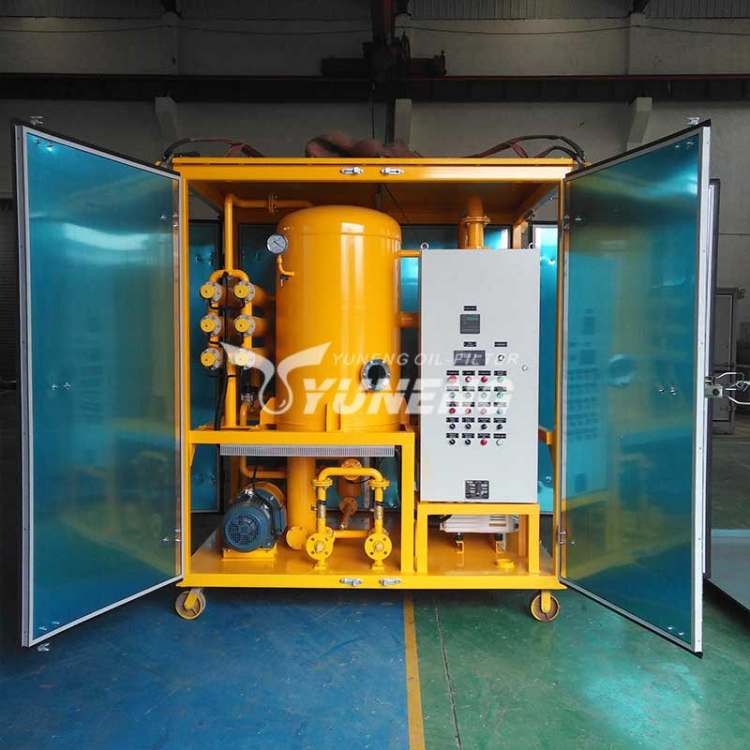
3. Deacidification
To get rid of acidity in transformer oil, the technology used in a purifier normally filters with special material (such as silica gel). This filtration system will capture acidity through a chemical reaction, thus purify the transformer oil.
4. Sludge Removal
Dust can get oil-contaminated and cause the failure of its insulation. But it is also easy to be separated by a transformer filtration system. Centrifuge and filter can both efficiently purify solids.
How Do I Know If The Transformer Oil Is Qualified?
That requires an oil test. To ensure that transformer oil is qualified in its heat resistance and electric insulating properties, an oil test is necessary after purification. We can judge from its color and appearance partly. But there are other properties that we can not see through naked eyes. Those properties include resistivity, density, acidity, breakdown voltage, etc. An oil tester will help to perform a thorough exam on this processed transformer oil before it goes back into a transformer.
Transformer oil purification and reuse help the power industry reduce its cost and are environment-friendly. You’d probably know about the transformer oil filtration machine by now. If you’re interested in purchasing one of those machines, you are free to get a quote from us. YUNENG is the leading transformer oil filtration machine manufacturer in China, engaged in the industry for over 20 years. Multiple types of purifiers are available. For details, visit our product page.

